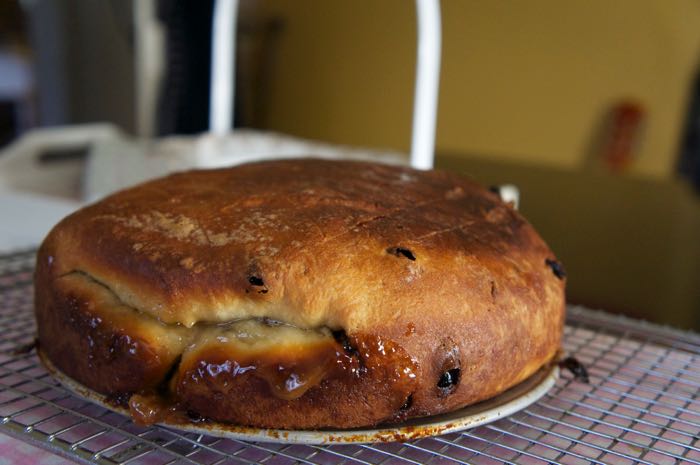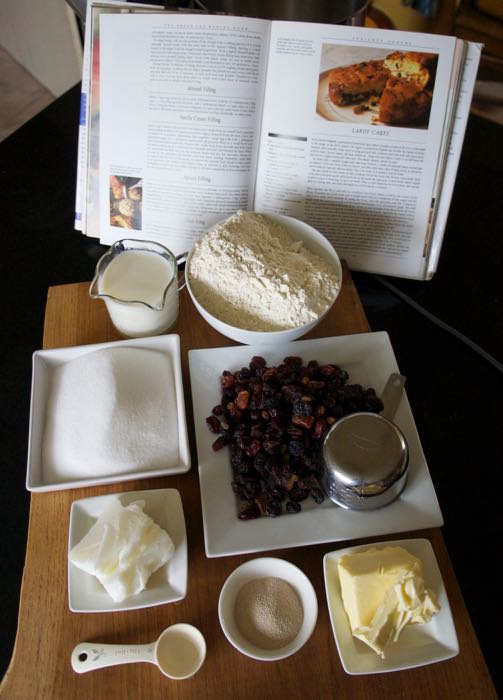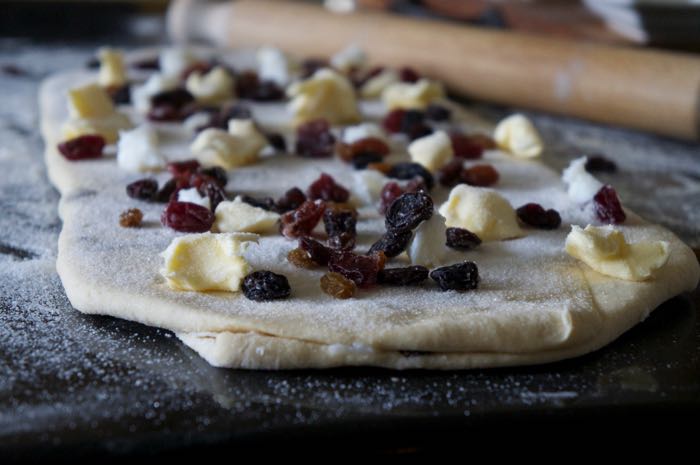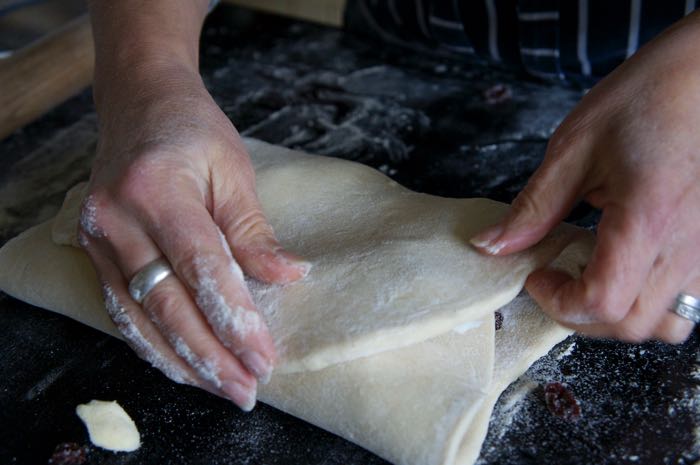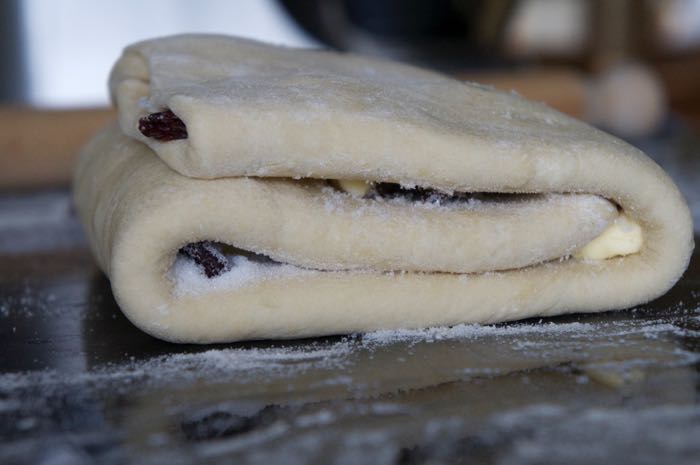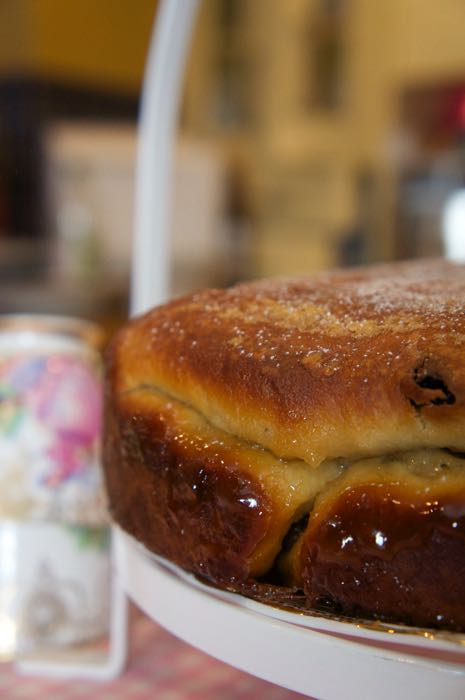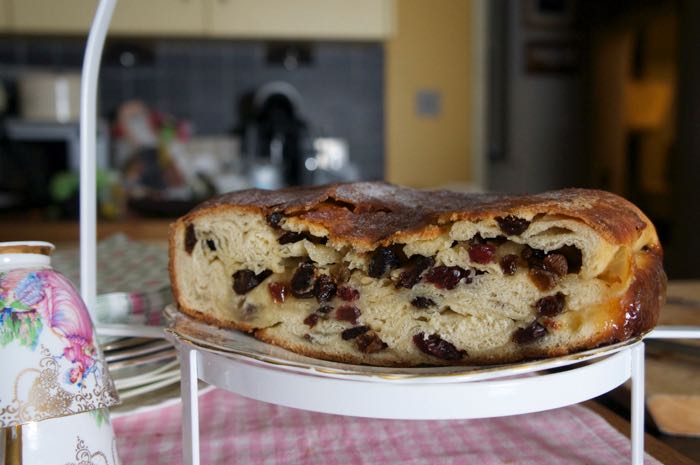I have to admit that this is the first time I have ever made a lardy cake, one of our many traditional yeasted fruit breads (for bread it is), having admired it from afar for many years but for some reason it has always managed to slip through the net in The Eating Tree kitchen.
In hindsight, this is probably not the most appropriate time of the year to post a recipe with such a high fat content as judging from other blogs, Twitter and the media in general, social or otherwise, the whole nation is tripping over itself as it rushes into 2015 scrambling towards the salad counter, with New Year’s Resolutions of rapid weight loss and Olympian fitness still echoing loudly in everyones’ heads.
However, we at The Eating Tree find January quite a difficult month to contend with, without the added onus and responsibility of having to count the calories. The festivities of Christmas and the New Year are over, leaving somewhat of an anti-climax and rather like a balloon with a slow puncture our holiday highs are slowly deflating. The new PlayStation Game has not quite come up to our son’s expectations and is noticeably being played less and less (not a bad thing in itself, it just means he will be looking out for the next game to take its place rather sooner than envisaged). The new jumper, which my husband couldn’t wait to wear, is already developing rather saggy cuffs, requiring constant washes to keep it in shape.
Whilst the house was looking delightfully seasonal in December, hung with a whole host of baubles, twigs, trees, swags and stockings, for a few weeks the decorations did a marvellous job of camouflaging the areas of the house that need decorating. Now the empty spaces are a reminder that the dreaded Farrow and Ball paint chart needs to be dug out of Pandora’s Drawer in the kitchen.
My son has returned to school, not his favourite place at the best of times. My husband has returned to work where he is mostly outside in the cold and damp January air and I am in the house, thinking of blog posts and how to cheer up both boys when they return from their daily drudge.
Comfort food is what is needed in January, usually in the form of healthy soups and stews, the added dumplings will not break the calorie bank and will be certain to raise a smile from even the gloomiest little face. And the odd piece of cake will bring more joy, something which is eminently good for the soul, than anything else I can think of.
Although even I, with my love of anything with a smooth, comforting fatty quality to it, will have to admit that a lardy cake should be reserved for only the very odd occasion. Skimming though my well-thumbed copy of Elizabeth David’s English Bread and Yeast Cookery she even states that “Like every packet of cigarettes, every lardy cake should carry a heath warning.”
Like a lot of traditional fare, the origins of this fabulous piece of English culinary history have become cloudy over time and depending on which information you happen to stumble across, it can hail from the North of England, Northumberland, Wiltshire or Hampshire, all with varying amounts of fruit and spice or no fruit at all. And I don’t know who has written the Wikipedia entry but apparently it is made in the West Country, particularly the counties of Gloucestershire, Wiltshire and Suffolk! Geography was not obviously their strong point.
The piece of information that everyone seems to agree on is that they were originally reserved for celebratory feasts on occasions such as harvest festivals and other such high days and holidays.
I have not skimped on the fat content on this recipe which seems to be the growing trend, although I have used half butter and half lard, not because of any perceived health benefits but just to give it a buttery taste. The result was so delicious, the outer crust was almost caramelised, with the most fabulous sweet and sticky crispy bits. The bread itself is not overly sweet as I have nearly halved the sugar content from the original recipe in The Complete Bread and Baking Book by Linda Collister and Anthony Blake. As a nod to more modern baking methods I used instant yeast instead of fresh and my trusty Kenwood Chef kindly did the kneading for me.
I will certainly be making this again, probably when I know visitors are coming in order that it can be shared, probably wise, even for January.
- 500g White Bread Flour
- 14g Instant Yeast (2 x 7g sachets)
- 1 tsp Salt
- 150g Sugar
- 230ml Milk
- 110g Unsalted Butter
- 110g Lard
- 240g Mixed Dried Fruit such as raisins, currants and sultanas
- Put the flour, yeast and salt in a large bowl and rub in 30g of the lard with your fingertips until you have fine breadcrumbs.
- Add the milk and mix with your hand until the dough is smooth and and soft and is not sticking to the side of the bowl.
- On a lightly floured surface, knead the dough for 5-10 minutes (for this stage I used the dough attachment in my Kenwood mixer).
- Put in a bowl, cover and leave to rise until the dough has doubled in size. This can take up to two hours depending on the temperature in the room. I used the bread proving setting on my oven and this took one hour.
- Once risen, turn out onto a floured surface and roll out a neat rectangle to a size of 20cmx50cm (8x20in).
- Cut the remaining lard and the butter into thirds, use one third of each to dot little pieces all over the dough. Follow with a third of the sugar and a third of the fruit.
- Pick up the long end of the dough furthest away from you and fold down a third, then fold the bottom end up a third (this will roughly make a square).
- Make a quarter turn with the square and roll out again, repeated the whole process twice until you have used up the sugar, fat and fruit.
- Grease a 9″ round cake tin with lard.
- Form the dough into a round shape to fit the tin.
- Cover with clingfilm and leave to rise again for another half an hour.
- Preheat the oven to 200c (fan). (I always use my bread setting at 200c)
- Bake for 35 mins until golden.
- Leave to cool a little before turning out.
